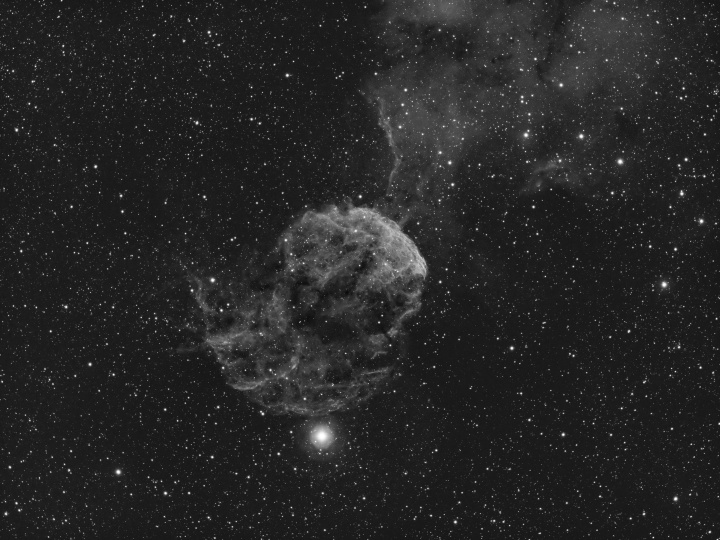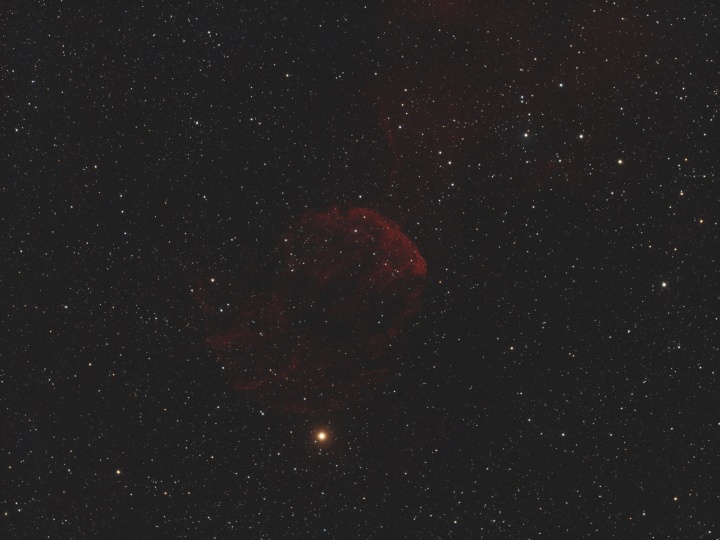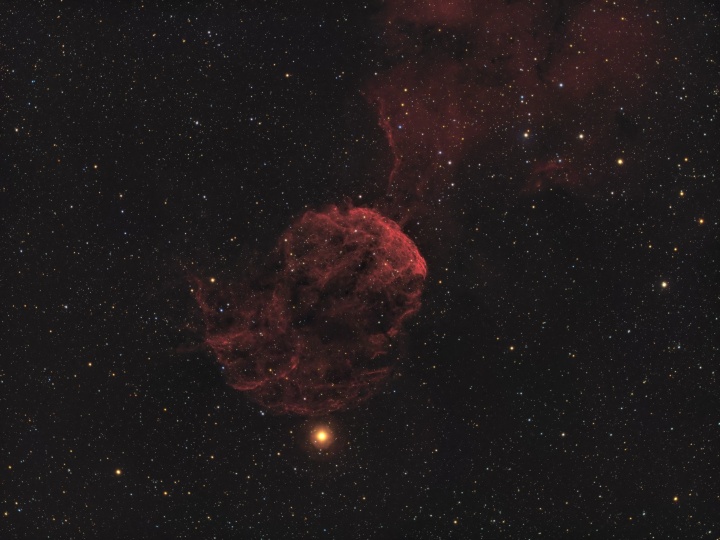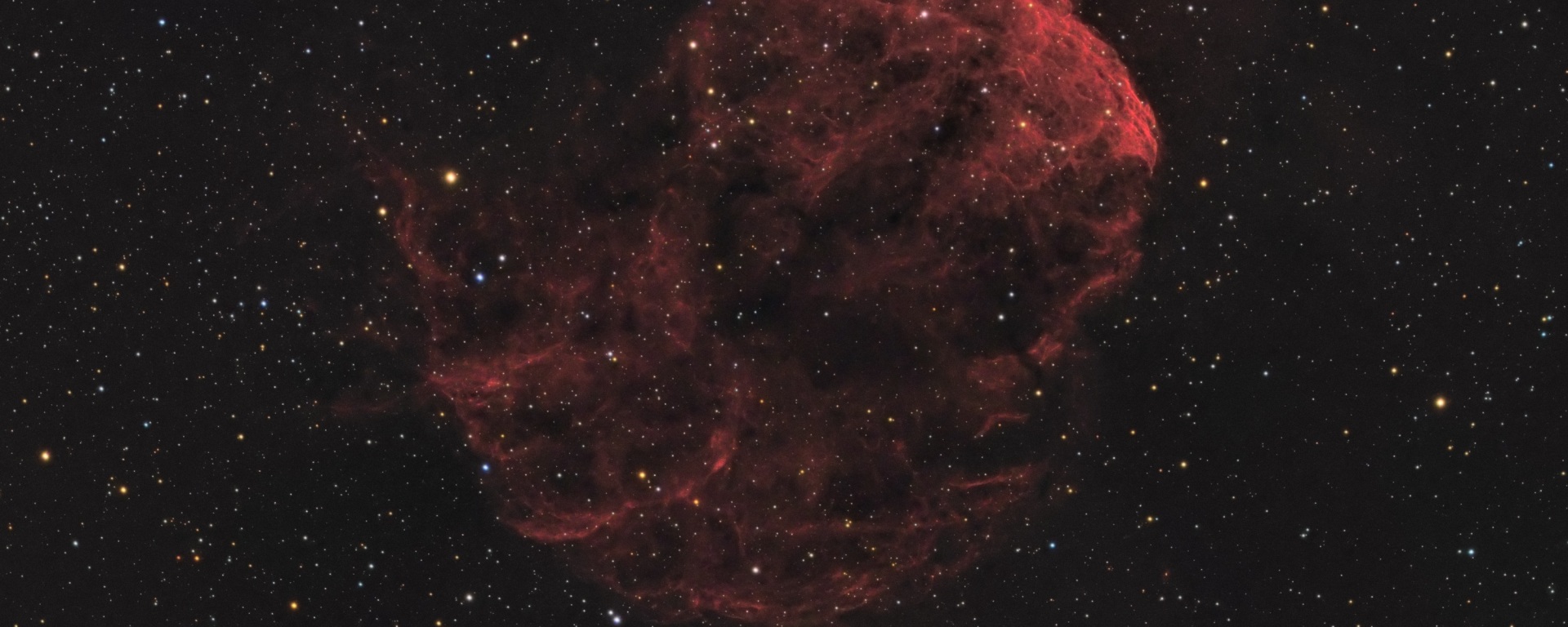The Jellyfish nebula (IC 443): pure chaos.
It consists of gas and debris expelled during the super nova explosion of a massive star. This bubble-shaped supernova remnant in the constellation Gemini resembles a jellyfish, with intricate tentacles dangling below.
The top right of the frame is filled with diffuse emissions from a different nebula, Sh2-249.

Near the end of the night, I decided to shoot a little RGB too. This is just the combined (Ha-R)GB data:

And here enhanced with H-alpha as luminance:

Date: 17 February 2018
Telescope: Teleskop-Service 80/480 triplet with 2″ TS 0.79X reducer/flattener and Baader 2″ UV/IR filter
Camera: ZWO ASI1600MM-C with EFW-8 and ZWO 31mm filters
Mount: Skywatcher EQ5 Pro
Exposure: 2.7 hours
Ha: 69 x 120 sec (gain: 200, bin 1×1, -15C)
RGB: 8/9/9 x 60 sec (gain: 74, bin 1×1, -15C)
Software: APT, PHD2, EQMOD, PixInsight
I also captured OIII and SII data a couple days later. The SII signal is quite strong in this object, but only the edges contain a little OIII signal.
Next, I prepared tonemaps for all 3 channels and combined them with Ha as luminance:

Dates: 17 February 2018, 22 February 2018
Telescope: Teleskop-Service 80/480 triplet with 2″ TS 0.79X reducer/flattener and Baader 2″ UV/IR filter
Camera: ZWO ASI1600MM-C with EFW-8 and ZWO 31mm filters
Mount: Skywatcher EQ5 Pro
Exposure: 4.3 hours
Ha 7 nm: 69 x 120 sec (gain: 200, bin 1×1, -15C)
OIII 7 nm: 30 x 120 sec (gain: 200, bin 1×1, -15C)
SII 7 nm: 29 x 120 sec (gain: 200, bin 1×1, -15C)
Software: APT, PHD2, EQMOD, PixInsight



